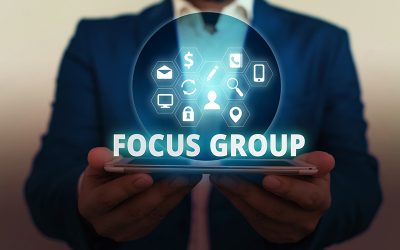Focus groups are one of the most popular ways to collect data and in-depth insights in qualitative research. This tool allows researchers to gauge people’s true perceptions and opinions about a particular product, service, topic or area of interest. A focus group usually consists of six to 12 participants. An experienced focus group transcription service provider can accurately reproduce the proceedings of the discussion so that the participants’ comments can be evaluated. Whether conducted online or in-person, the success of a focus group depends to a large extent on the skills and qualities of the moderator. Here are 5 tips to succeed with focus group moderation:
- Have topical expertise: The moderator should have some level of insight into the industry to guide the discussion, ask the right follow-up questions, and get optimal results. Topical expertise is needed to understand the language used by the participants and to interpret their statements.
- Fully prepare for the session with the right questions: Being well prepared is the key to moderating a focus group successfully. With a clear, concise topic for discussion, you need to prepare your questions carefully. Better questions will enable better and more specific insights. Actionable Research recommends asking probing questions that begin with ‘why’, ‘what’ or ‘how’, addressing each participant as well as the group as a whole. It’s important to avoid asking leading questions that might influence the participants’ answers. Ensure that they state things clearly and in their own words. Once everyone agrees that a question has been satisfactorily answered, you can move on to the next topic.
- Establish a comfortable, relaxed environment: While asking the right questions is important, moderating a focus group is much more than that. Good moderators enjoy meeting people and will work on building rapport with the participants at the outset. However, rapport building is a challenge in the asynchronous online mode since the moderator will not have direct visual or verbal contact with the participants. In this case, the moderator will need to contact participants who are not active enough by email or phone. A good moderator will focus on conducting a smoothly flowing conversation rather than an interrogatory session. Start with an icebreaker and let the participants learn more about each other. Participants will be more likely to provide honest, complete responses in a comfortable, relaxed environment. Establish a thoughtful, permissive atmosphere where they can interact with each other for optimum synergy. If one participant begins to dominate proceedings, the moderator should gently interrupt them and encourage others to get involved. A good moderator will be able to balance the requirements of sensitivity and empathy along with objectivity and detachment.
- Listen and be flexible: Good focus group moderators spend 90 percent of the meeting time listening to participants’ opinions, feelings and ideas, while asking questions to guide the conversation. Focus on what each person is saying and show that you are listening. Give each respondent time to think before responding to a question. The Society if Sensory Professionals recommends using the 5-second “Pause” and “Probe” Technique – ask clear questions and pause for responses, and then prod for more information/comment clarity. The time frame for answering a question would be fixed in an online focus group, but a skilled moderator will be flexible and able to manage the discussion within the allotted time even if unexpected digressions occur.
- Set up a proper environment: The physical setting matters. The moderator should be involved in organizing the room and the recording equipment. Respondents should be informed at the outset about the use of video/audio recording. The recording device should be within range of everyone. Clear audio can be ensured if each respondent has their own microphone. The seating arrangement can also impact rapport during in-person discussions which in turn, will influence the quality of the data collected. The “ideal” seating arrangement, according to www.researchdesignreview.com, will vary based on the physical environment; the number, type, and homogeneity of participants; and topic of discussion.
Before the discussion is analyzed, it would have to be transcribed. With a good audio/video recording, an experienced digital transcription service provider can provide an accurate record of the focus group for review and analysis.




